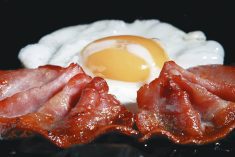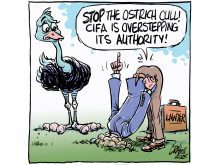All farming really consists of is catching sunshine and putting it in the bank.
The solar chain is a key concept taught in holistic management, a decision-making framework I have used and taught to hundreds of farm families during the past 15 years. It can make a big difference on your bottom line.
The solar chain has three links and every year one of them is weaker than the other two. If you want to make a profit, strengthen that weak link first.
Here’s how it works:
Read Also

Budget seen as fairly solid, but worrying cracks appear
The reaction from the agriculture industry to prime minister Mark Carney’s first budget handed down November 4th has been largely positive.
- First link: Solar energy from the sun hits the earth. If it happens to land on a plant, the plant catches it, and through photosynthesis, converts it to plant material. Let’s call it the energy conversion link.
- Second link: The plant continues to catch sunshine and convert it to plant material until it is big enough to harvest. We use either an animal or a machine to harvest the plant, and turn it into a product such as beef, lamb, hay or grain. We’ll call this the product conversion link.
- Third link: Now that we have a product, we sell it to somebody and earn money. We’ll call this the marketing link and the money we earn we’ll call solar dollars because we got them from the sun.
How do we use the solar chain concept in financial planning?
Let’s say you normally have lots of pasture and your cows can’t graze it all down, so you have some left over at the end of the growing season. That means your product conversion link is weak; you don’t have enough harvesting power to collect all the sunshine your plants have caught. There are many ways to strengthen this link:
- Buy more grazing animals.
- Custom graze animals.
- Put up hay.
- Pay somebody else to put up hay for you.
Now, suppose the fertilizer dealer has a door crasher sale on fertilizer. It’s so cheap you’d be crazy not to buy some. The problem is, if you buy some before strengthening your weak product conversion link, you will be wasting the money you spend on it because you already have too much captured sunshine (pasture), and fertilizer will just create more.
Fertilizer strengthens the energy conversion link by creating more vigorous growth, so the plants can catch more sunshine.
Let’s say you solve the product conversion link weakness by custom grazing. The summer goes well, you eke out your grass just right for the number of animals and you put more money than usual in the bank because you only spent money on the weakest link in solar chain.
Now, what’s the weak link?
Perhaps you grow grain. You are getting good crops by catching lots of sunshine and you get the crop off in good time because you have enough harvesting power, but you have not taken a marketing course. Consequently, you sell into the bottom third of the annual price range for grain, the way 80 percent of all grain farmers in North America do, because you don’t understand how to set price targets or how to forward price. So your weak link is marketing.
The simple way to strengthen that link is to take a marketing course this winter. You can probably find one through your local agriculture extension office or maybe through a grain broker. It will cost money, but money spent strengthening the weak link on your farm each year will create new wealth.
Here’s an idea for this year’s growing season: every time you plan to spend money on the farm, ask yourself whether it will address the weak link in your solar chain. If it doesn’t, ask yourself whether it is strengthening another link, and if it is, maybe it is money you don’t really need to spend right now, at least until you have strengthened the weak link.
Edmonton-based Noel McNaughton speaks at conventions and for corporations on Farming/Ranching at Midlife Ñ Strategies for a Successful Second Age. He can be reached at 780-432-5492, e-mail noel@midlife-men.com or visit www.midlife-men.com.














